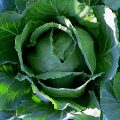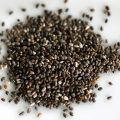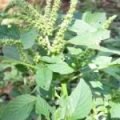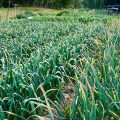Alugbati (Basella alba L., B. rubraL.) or Malabar spinach also known as Ceylon spinach, Vietna-mese spinach (English); Saan Choy, Shan Tsoi, Luo Kai, ShuChieh, Lo Kwai (Chinese); TsuruMurasa Kai (Japanese); MongToi (Vietnamese); Paag-Prung (Thai); Genjerot, Jingga, Gendola (Indonesian), is one of the most popular indigenous leafy vegetables in the Philippines. It is widely cultivated in all regions of the country particularly in the Visayas region.

The plant is a succulent branched, smooth, twining, herbaceous vine. The stems are green or purplish. The leaves are fleshy, ovate or heart-shaped, 5-12 centimeters (cm) in length, stalked, tapering toa pointed tip and heart shape at the base. The spikes are axillary, solitary and 5-29 cm in length. The flowers are pink and about 4 millimeters (mm) long. The fruit is fleshy, stalkless, ovoid or nearly spherical, 5-6 mm in length and purple when mature.
The taste is similar to spinach, however this crop is a very warm-season crop unlike standard spinach grown in the Northeastern US. This crop is native to tropical Asia, probably originating from India or Indonesia, and is extremely heat tolerant.
Production trends
Malabar spinach is grown throughout the tropics as a perennial and in warmer temperate regions as an annual crop. The vegetable is sold in many local markets. It is a minor vegetable and since it is generally grouped together with other greens, no data on production or trade are available.
Uses/Importance
Alugabti is commonly grown for its young shoots which make an excellent succulent, slightly mucilaginous vegetable, used as a pot herb in stews or soups, consumed boiled, fried in oil or sometimes as green salad. Its fruits seem to have been earlier used for dyeing purposes in China. The red fruit juice can be used as ink, cosmetic and for coloring foods. The young leaves can be used as laxative, the pulped leaves to poultice sores, red fruit juice as eye drops to treat conjunctivitis and the roots as rubefacient. The red forms are commonly planted as ornamentals and are, even becoming popular in Europe as a pot plant.
The plant is a rich source of soluble fiber, which helps digestion. It is rich in Saponins that act as phytochemicals, which can fight off cancer. The red variety of alugbati is a good source of xanthones, an antioxidant. Its Folic acid, which is also called folate, is one of the B vitamins that are critical for childbearing women. It helps them prevent birth defects on the neural tube, e.g., spina bifida.
The cooked roots are used to treat diarrhea while cooked alugbati leaves and stems can serve as mild laxative, especially in kids and pregnant women. The decoction from the leaves is also mixed with sugar and used for catarrhal difficulty in children.
Similarly, the sap is also applied to acne to prevent inflammation. It also soothes headaches. When mixed with butter, it can be applied on burns and scalds. The flowers can be used as antidote for poison while a poultice made from the roots is applied to swellings.
According to other countries’ folklores, the plant is also used in treating hemorrhages and can enhance fertility in women. It is also administered to patients with sexually transmitted diseases like gonorrhea.
Nutritional Properties
The composition of Alugbati is comparable to other dark green leafy vegetables with ahigh moisture content. The leaves contain several triterpeneoligoglycosides of the oleanane-type, including basellasaponins, betavulgaroside I, spinacoside C and momordins. Two antifungal peptides and two ribosome-inactivating proteins with antiviral activity have been isolated from the seeds.
Crop types
There are three common types of alugbati: Basellaalba with green stem and oval to almost round leaves; Basellarubra with red stem and green, oval to round leaves; and a third type which is a hybrid of the two. A stopgap variety named “Pulahan” with red stem and the green stem called “Luntian” was released in 1981 by the Institute of Plant Breeding.
Cultivation
Climate and soil requirements
It grows well in tropical lowlands at elevations up to 500-3,000 meters (m). It also grows in temperate regions, however growth is slow in low temperatures resulting in low yields. Flowering is induced during the short-day months of November to February. Alugbatithrives in many soils, but sandy loam soils rich in organic matter with pH ranging from 5.5 to 8.0 appears to be most suitable.
Add compost or other organic matter to the soil. Alugbati grows best in soils high in organic matter. Compost also improves soil moisture retention and drainage, helping to create the moist and loamy soil that this spinach prefers. Add at least a couple of inches of compost to the surface of the soil and mix it into the native soil with a tiller. Inland soils tend to be heavier than coastal soils, so they can use up to 6 inches of compost.
Land preparation and planting
These are propagated by cuttings or seeds.
Planting from Cuttings
The leaves are usually removed before planting to reduce water loss through aspiration. Fresh, healthy tip cuttings of about 20-25 cm lengthare the best planting materials. Soak the cuttings in water overnight or keep them in a dark and damp space for a day or two. Plant the cuttings on hills or in rows. Space small hills six to eight inches apart and put three or four cuttings on each hill. Alternatively, space rows eight to 12 inches apart, with the cuttings spaced about eight inches apart. Water the cuttings immediately and continue to keep the soil moist.
Planting from Seed
Scarify (to make tiny punctures or superficial incisions) the seeds by using sandpaper or a knife to cut the outer seed coat. Plant the seeds directly outside after soil temperatures have warmed to the minimum temperature required for germination of 18.33 °C. Plant them about 1/4 inch deep in rows spaced about eight inches apart. Alternatively, spread seeds all across the soil and then thin the seedlings later so that they are spaced about eight inches apart. Keep the soil consistently moist. If the soil dries out, the plants can flower, which makes the leaves taste bitter.
In home gardens, alugbati is usually grown on slanting or horizontal trellises. For commercial production, densities of about 50,000 plants/hectare are recommended.
Fertilization
Alugbati can grow even under conditions of moderate soil fertility, but production is increased with the application of fertilizers. Soil test is highly recommended to determine available N, P and K. The fertilizer requirement calculated based on the target yield. Apply compost or manure at 3-5 tons/ha during plot preparation and sidedress once a month with manure or compost at 20-30 bags/ha. Tea manure and fermented plant juice (FPJ) may also be used to improve soil fertility.
To prepare tea manure, soak ¾ sack of dried cow or horse manure in a ¾ plastic drum (200 L capacity) of water. Soak for 5 – 7 days with frequent stirring. To prepare the FPJ, mix three parts chopped plant shoots or banana trunk with 1 part raw sugar or molasses. Ferment mixture for 5 -7 days. Dilute 1 part tea manure or FPJ to 20 parts water and drench on the plots or use as foliar fertilizer.
Trellising
In commercial production, grow alugbati without trellis while in home or backyard gardens, provide trellis to maximize space.
Irrigation
Alugbati requires plenty of water for optimum growth. During dry season use furrow irrigation at 5-7 days interval or sprinkler irrigation daily to develop a deep healthy root system, use of mulch to conserve soil moisture like grass clippings or rice straw. For wet season need to provide canals to facilitate quick drainage of excess water after heavy rains. Avoid over irrigation to prevent foliar diseases development and leaching of soil nutrients.
Weed Management
At early stage of the plants weed control is necessary to give alugbati a head start. Thorough land preparation and mulching such as grass clippings and rice straw can help to control the growth of weeds. Spot weeding or hoe weeding can be done also as needed.
Crop Protection
Alugbati is generally tolerant to pests and diseases due to its very thick leaf cuticle, which make it easy to grow organically. However, it serves as a host to a number of insect pests such as leafminers and cutworms that can be managedby regular harvesting. Leaf spots caused by Cercosporaand Acrotheciumsometimes occur. Alugbati is very susceptible to root-knot nematodes but it can be minimized by crop rotation with corn and planting of marigold.
Harvesting
Alugbati is ready for harvest at 30-45 days after planting. Plants harvested either once or repeatedly by priming. In once-over harvest, cut the stems or shoots close to the ground or uproot the entire plant (if grown from seeds), then wash and tie in bundles. For multiple harvests, pick or cut the shoots at about 15-25 cm long or at a frequency of weekly intervals. Harvesting is done late in the afternoon to reduce water loss and keep the produce in cool, shaded place.
Post-harvest Handling
This plant easily wilts after harvest. A common market practice is to sprinkle the bundles with water or to wrap them in banana leaves to retain freshness. If harvested with the roots intact, keep the bundles fresh for up to 7 days by letting them stand in a basin filled with water. For home consumption, pack alugbati in a styrofore boxes then store in the refrigerator to keep them fresh for up to 14 days.
By:
Julie Ann A. Aragones
Department of Agriculture
Bureau of Plant Industry
References
Backyard Gardening Technoguide. Philippine Council for Agriculture, Forestry and Natural Resources Research and development Center (PCARRD) 69p.
DA-NAFC Sub-Committee on Fruits and Vegetables. Booklet on Indigenous Vegetables. 52p
http://database.prota.org/dbtw-wpd/exec/dbtwpub.dll?AC=QBE_ QUERY&BU=http%3A%2F%2Fdatabase.prota.org%2Fsearch.htm&TN=PROTAB~1&QB0=AND&QF0=Species+Code&QI0=Basella+alba&RF=Webdisplay
http://homeguides.sfgate.com/plant-alugbati-23791.html
http://www.all-about-philippine-fruits-and-herbs.com/alugbati-medicinal-uses.html
https://www.google.com.ph/search?q=Cercospora+leaf+spot&client=firefox-a&hs=Gsr&rls=org.mozilla:en-US:official&source=lnms &tbm=isch&sa=X&ei=p2uEUsOFIYWdiAeHroHgCg&ved=0CAkQ_AUoAQ&biw=1600&bih=797
http://www.wordreference.com/definition/scarify
http://www.worldcrops.org/crops/Malabar-Spinach.cfm






